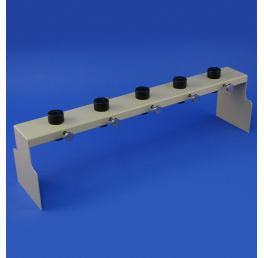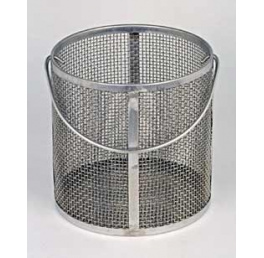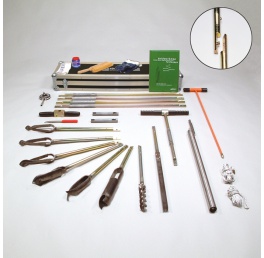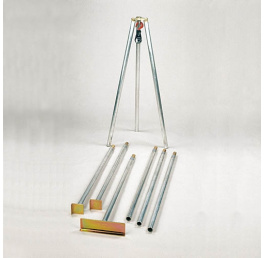
The 227 determines soil water potential by measuring electrical resistance. When the 227 is wet, the electrical resistance is low. As the 227 dries, resistance increases.
The 227 cylindrical blocks are composed of gypsum cast around two concentric electrodes, which confine current flow to the interior of the block, greatly reducing potential ground loops. Gypsum located between the outer electrode and the soil creates a buffer against salts that may affect the electrical conductivity.
Campbell Scientific recommends removing the 227 during winter.
The 227, manufactured by Delmhorst, is a cylindrical gypsum block that estimates soil water potential from -10 to -1000 kPa. It connects directly to a data logger.
Benefits and Features
- Compatible with most Campbell Scientific data loggers
- Contains blocking capacitors in its cable that minimize galvanic degradation and measurement errors due to ground loops
- Measures a wide range of matric potential
- Buffers salts in the soil
- No maintenance required
- Uses electrical resistance method for soil water matric potential measurement
- Measurement range: -1000 kPa to -10 kPa
- 227-L Delmhorst Soil Matric Potential Block contains in-line blocking capacitors for applications when multiplexers are not used
| Material | Gypsum |
| Measurement Range | -10 to -1000 kPa |
| Calibration | Individual calibrations are required for accurate measurements. Refer to the sensor manual for more information. |
| Operating Temperature | Soil temperatures above freezing |
| Life Expectancy | Two freeze-thaw cycles |
| Electrode Description | Concentric cylinders |
| Center Electrode | Excitation |
| Outer Electrode | Ground |
| Cylinder Diameter | ~2.25 cm (0.88 in.) |
| Cylinder Length | ~2.86 cm (1.25 in.) |
| Weight | 180 g (0.4 lb) |







